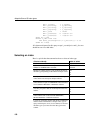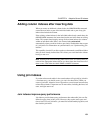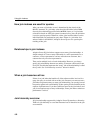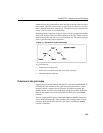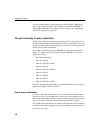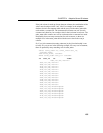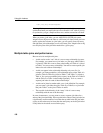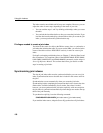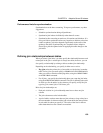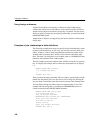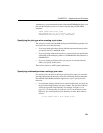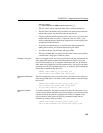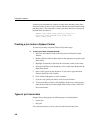
Using join indexes
158
The index remains unavailable until all steps are complete. However, you can
adjust the order of some steps, depending on the needs of your site:
• You can combine steps 1 and 2 by defining relationships when you create
the table.
• You can load the data either before or after you create the join index. If you
load the data into the underlying column indexes after you create the join
index, you must perform the synchronization step.
Privileges needed to create a join index
You must be the owner of a table or the DBA to create, alter, or synchronize a
join index that includes that table. If you are not the DBA, you need to be the
owner of the table and have RESOURCE authority in order to create a join
index.
For details on inserting and deleting data, see Chapter 5, “Moving Data In and
Out of Databases” For complete syntax of the
CREATE TABLE, ALTER TABLE,
LOAD TABLE, INSERT INTO, and SYNCHRONIZE commands, see the Adaptive
Server IQ Reference Manual. The sections that follow give details on other
steps in creating a join index.
Synchronizing join indexes
The data in join index tables must be synchronized before you can use a join
index. Synchronization ensures that the data is loaded in the correct order for
the joins.
Synchronization occurs automatically when you create the join index.
Synchronizing before completing the transaction that loads or inserts data also
makes tables available immediately for all readers. Once data is loaded,
however, you must synchronize the join index explicitly, with one exception:
the join index is synchronized automatically when changes are made to the top
table of the join hierarchy.
To synchronize explicitly, issue the following command:
SYNCHRONIZE JOIN INDEX [
join-index-name
[,
join-index-name
]
If you omit the index names, Adaptive Server IQ synchronizes all join indexes.



